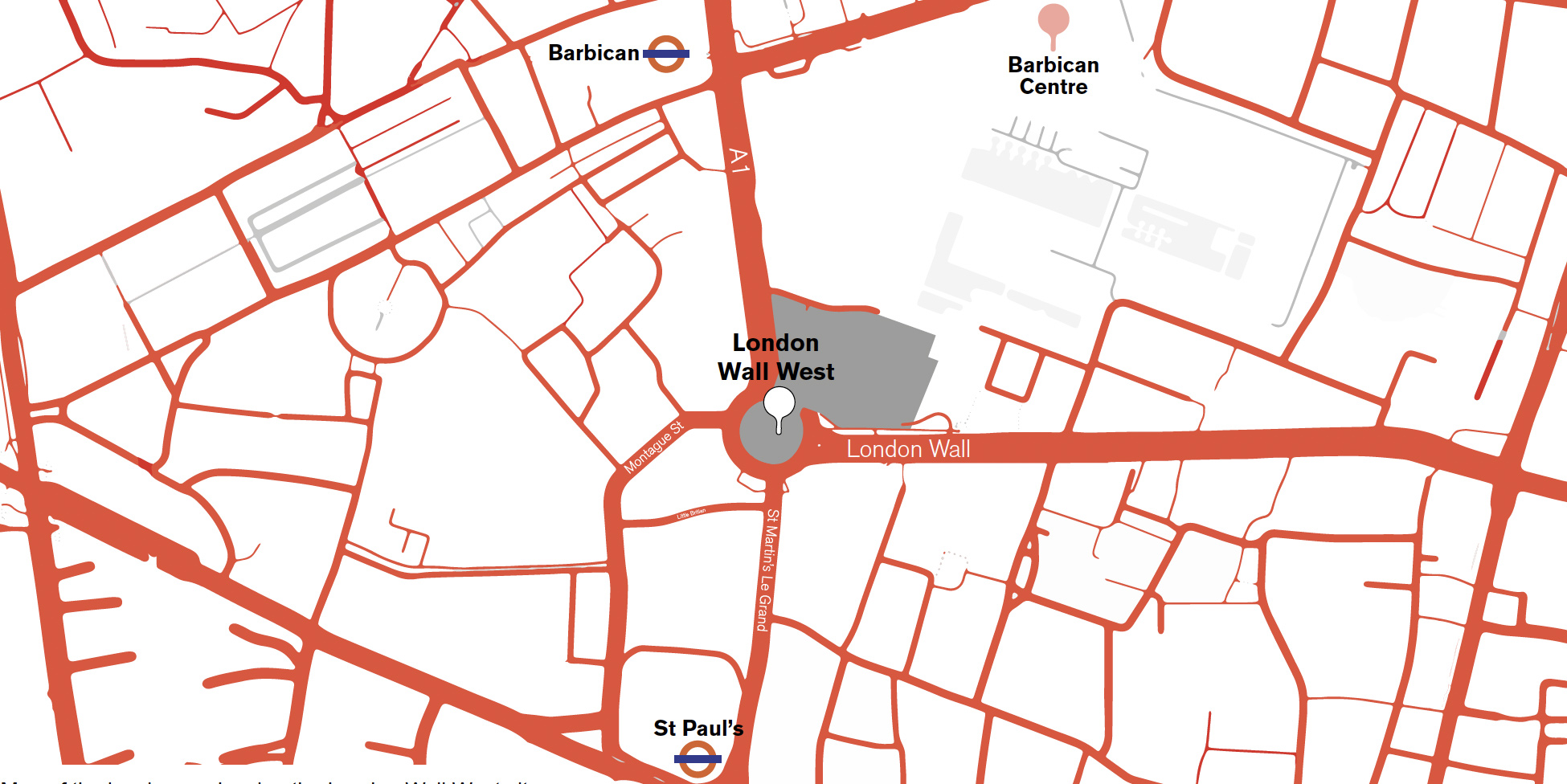The site today
The London Wall West site is located at the western end of London Wall. It comprises a number of existing inter-linked buildings, including the current home of the Museum of London (which will be moving to Smithfield Market) at 150 London Wall, and Bastion House, a 1970s office building that sits at above the east side of the museum podium. The site has a unique and key urban location at the centre of Culture Mile, a new urban initiative and home for contemporary culture in the ancient heart of London’s working capital, stretching from Farringdon to Moorgate.
Previous concept proposals for the site comprised a new Centre for Music and commercial floorspace, however, it was confirmed in February 2021 that this would not go ahead and that time would be taken to consider alternative development proposals.
Current limitations
When assessing what is possible here, we have had to weigh up a number of factors that have together created challenges and opportunities for the future redevelopment of the site. The three main considerations have been listed below:
1. Unsustainable and outdated buildings
Bastion House and the Museum of London site are very much at the end of their design lives and Bastion House is no longer fit for purpose as an office building capable of providing high quality, modern office facilities.
Over the past six months we have undertaken studies to assess whether there is a case to refurbish and extend, or partially redevelop, rather than fully redevelop these buildings in order to ascertain what option would be the most environmentally sustainable.
Our preliminary studies have identified a number of technical issues with the existing buildings. Not least, the buildings were not of course designed to modern fire or structural standards and the building’s facade means that the energy performance is very poor.
Significant remedial work is required to bring these buildings back into safe use and ensure that they last for the next 60 years. This work would be carbon-intensive and still not deliver efficient buildings by modern standards.
The initial studies undertaken conclude that the best approach is therefore a full redevelopment with high sustainability aspirations, including a responsible approach to re–purposing the existing materials on site, excellent energy efficiency and the highest sustainable design standards. You can see further details of this on strategy page 13.
2. Unwelcoming and difficult to navigate public realm
The surrounding pedestrian environment is difficult to navigate, lacking in public spaces and closed off from the local area.
There is also a dark and unwelcoming space created where the museum and Highwalks extend over the roundabout.
Along with existing road layout issues and the large roundabout below the Museum of London, the site can be difficult to traverse and acts as a barrier between West Smithfield, the Barbican and rest of London Wall. This will only become more of an issue as part of the West Smithfield area is transformed into the new Museum of London – a venue that could welcome around two million people per year.

The Rotunda
3. Hiding one of the City’s most important historical features
The current layout of the buildings block the historic Roman Wall that dates right back to 200 AD and was constructed to defend the most strategically important parts of Londinium.
As a result, passers by are almost unaware of the history that sits just out of sight.
Along with creating a better streetscape, any future buildings on the site must create opportunities to celebrate London Wall for many generations to come.

London Wall Garden

The Rotunda

Map of the local area showing the London Wall West site